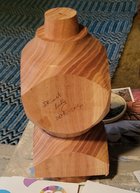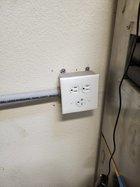I've got a Rikon 14" bandsaw that I'm mostly satisfied with, but if the 1.5hp motor had another 1/2 hp behind it, it'd do everything I need it to. I don't know as much as I'd like to about AC motors, so I don't know enough to know what I don't know, so it could be a lame idea that's fraught with peril and is too ridiculous to even consider, or something that could be handled reasonably easily with a trip to a local motor shop. I'm pretty handy, so I'm not worried about being able to do the work, just uninformed about motor technology. Am I better off forgetting the whole hair brained idea, or pursue it with some guidance?
Last edited:




